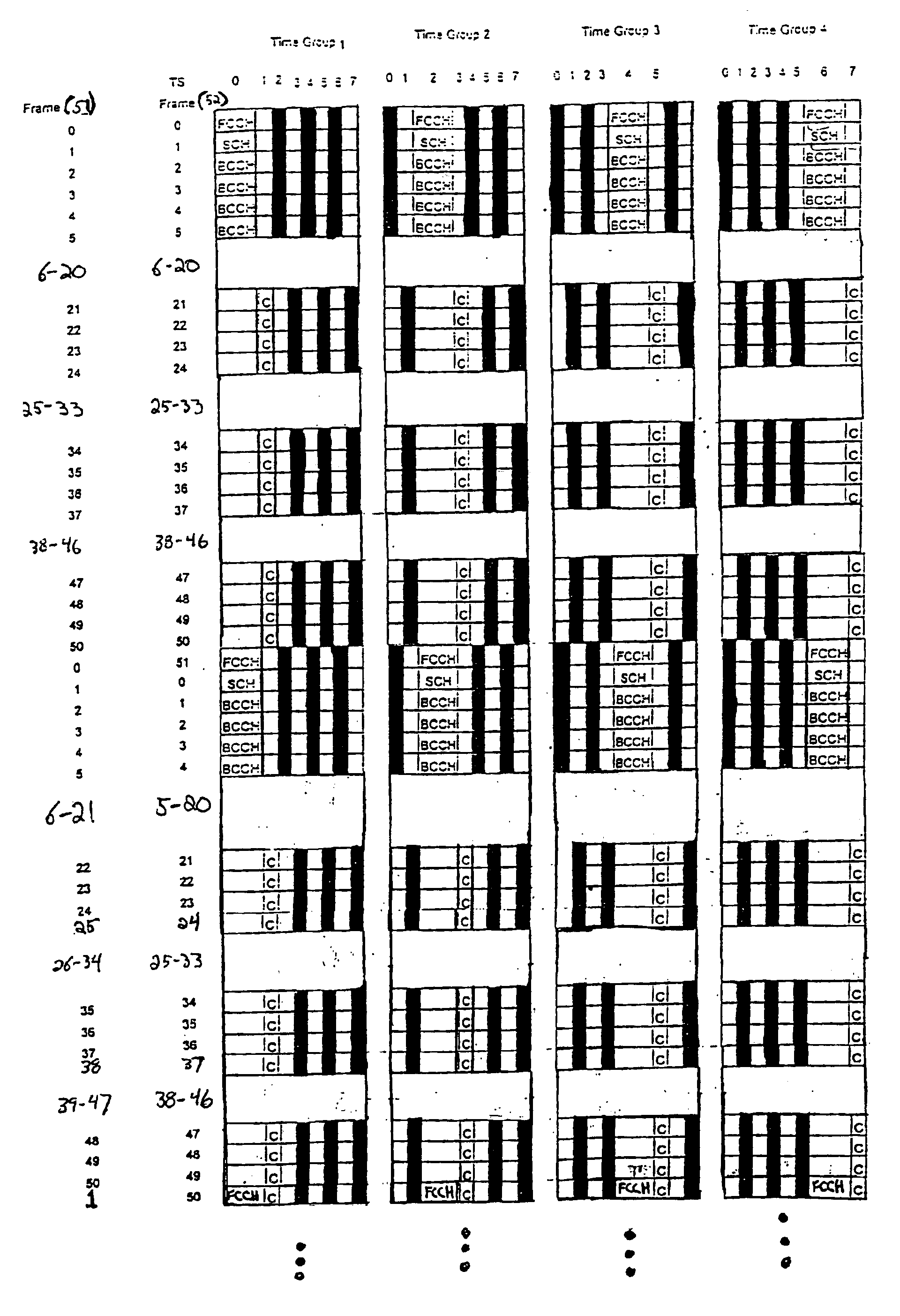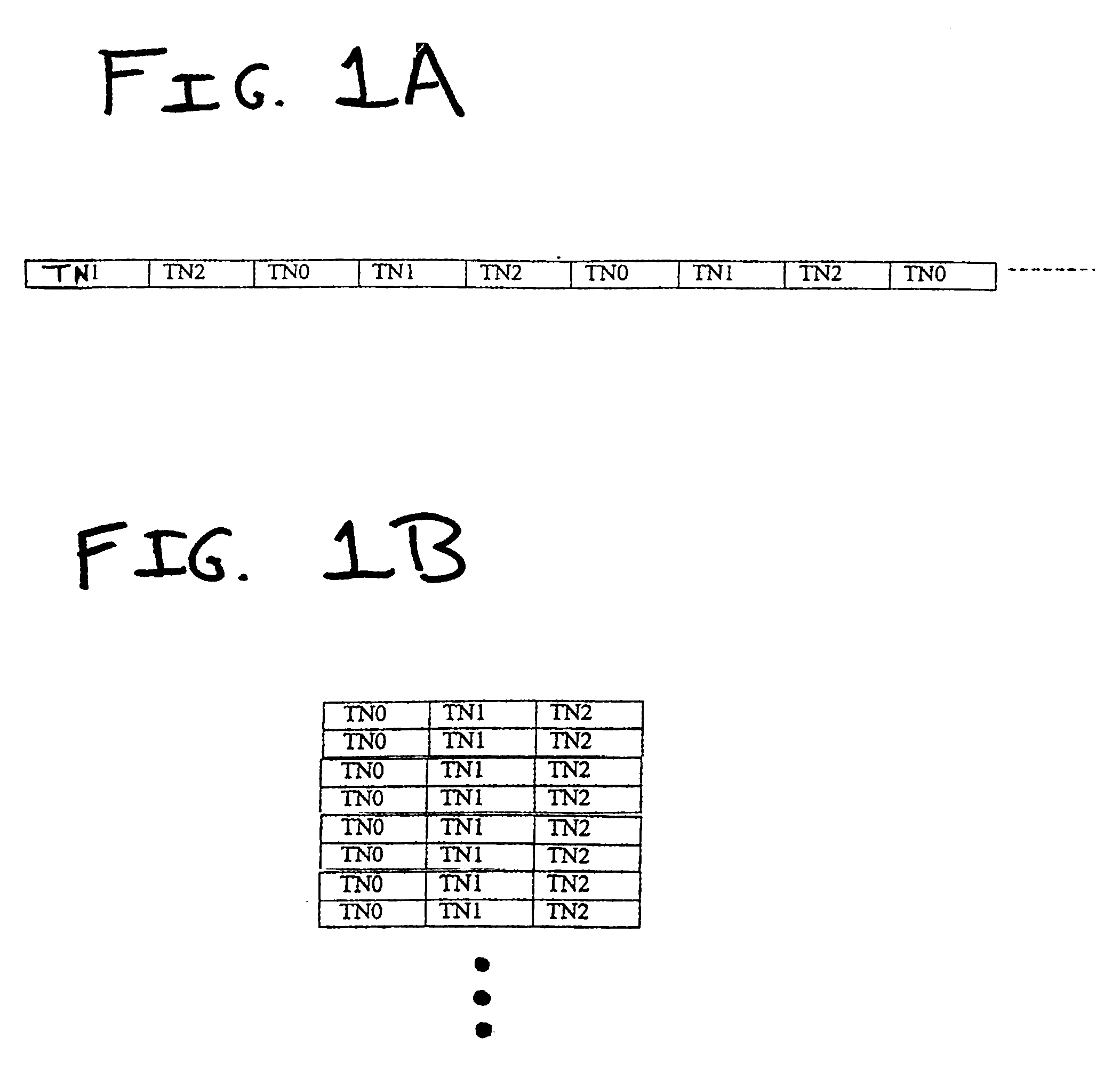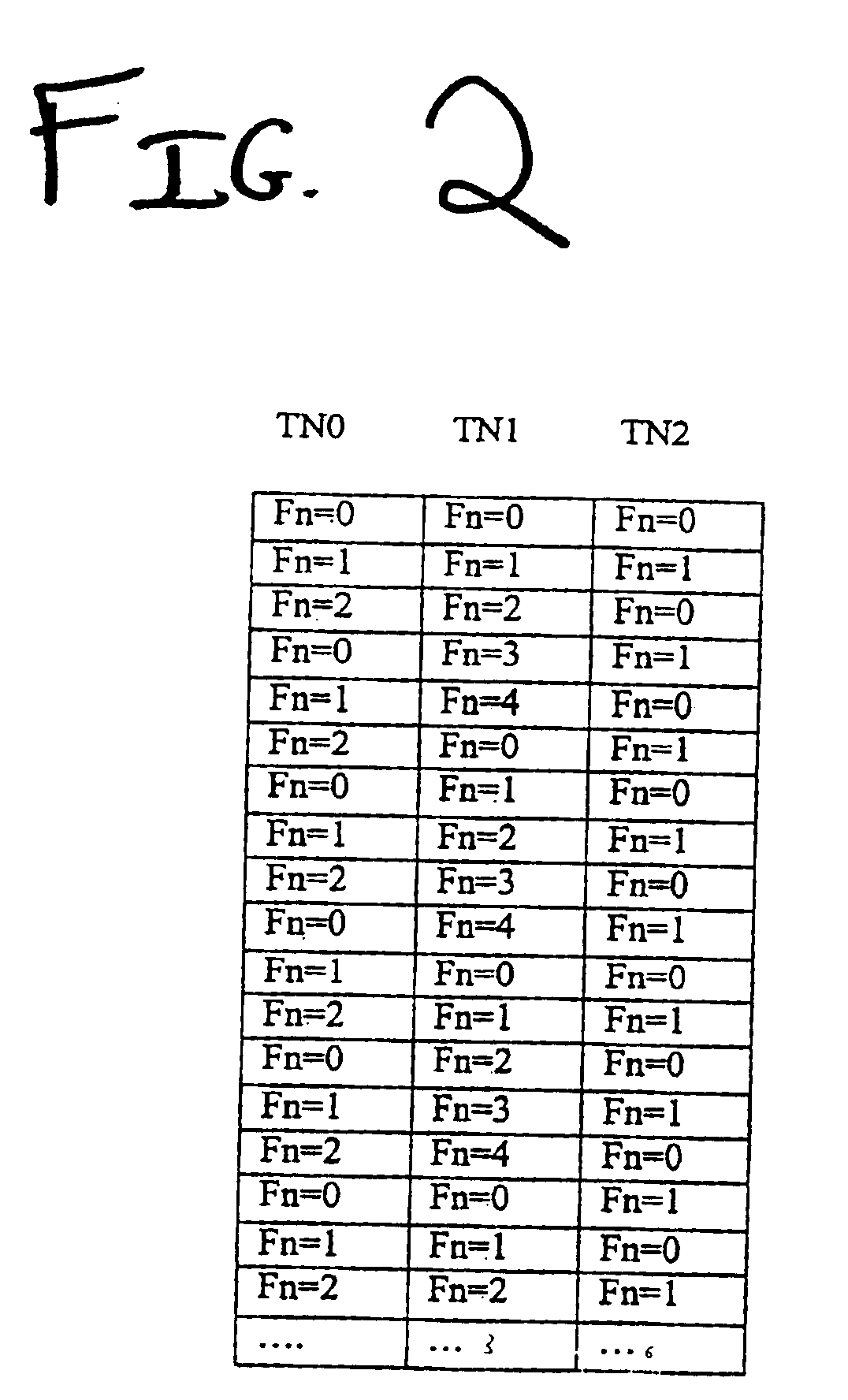Channel sharing by diverse multiframes in a wireless communications network
a wireless communication network and multi-frame technology, applied in the field of wireless communications, can solve the problems of not supporting circuit-switched gsm service and negatively affecting overall network performance, and achieve the effects of facilitating the achieving of gsm-compatible packets, and reducing the cost of gsm services
- Summary
- Abstract
- Description
- Claims
- Application Information
AI Technical Summary
Benefits of technology
Problems solved by technology
Method used
Image
Examples
Embodiment Construction
The present invention is a system and method for providing air interface channels in a wireless communications network. In accordance with the present invention, physical channels for a single frequency carrier are defined as time slots, a series of consecutive time slots define a frame, and a plurality of multiframe types are defined for the single frequency carrier as including different numbers of consecutive frames. By multiplexing a plurality of multiframe types onto a single frequency carrier, diverse channels types, such as traffic channels, broadcast control channels, and common control channels, are accommodated on the same frequency carrier to enable efficient utilization of frequency resources. The general principles of the present invention will be described below with reference to FIGS. 1A, 1B, and 2, and an exemplary implementation of the present invention will be described with reference to FIG. 3.
FIG. 1A illustrates a one-dimensional representation of an exemplary di...
PUM
 Login to View More
Login to View More Abstract
Description
Claims
Application Information
 Login to View More
Login to View More - R&D
- Intellectual Property
- Life Sciences
- Materials
- Tech Scout
- Unparalleled Data Quality
- Higher Quality Content
- 60% Fewer Hallucinations
Browse by: Latest US Patents, China's latest patents, Technical Efficacy Thesaurus, Application Domain, Technology Topic, Popular Technical Reports.
© 2025 PatSnap. All rights reserved.Legal|Privacy policy|Modern Slavery Act Transparency Statement|Sitemap|About US| Contact US: help@patsnap.com



